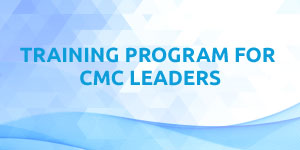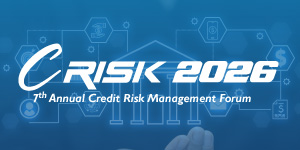Free knowledge to monitor the world of events. Have a look at our must read Blogs on Pharma, Finance, HR, Health and Cross Industry.
Efficacy of Quality Control For Biologics and ATMPs
2022-08-09
Characterization and analysis of advanced therapy medical products (ATMPs) are crucial for delivering the crucial chemistry, manufacturing, and control (CMC) data required for submission in investigational new drug applications.
Innovative tests for enhanced therapy quality control testing
The panel of assays offered by Clean Cells comprises procedures for characterizing conventional biologics as well as particular techniques for:
- Cell-based therapy products are tested utilizing quick turnaround tools (BACT/ALERT for sterility, multiple qPCR assays) to find contaminants, cytogenetic techniques to do G-banding karyoping, and FISH studies (Fluorescence in Situ Hybridization).
- Testing gene therapy products includes biosafety assessment of all viral vector types (lentiviral, adenoviral, and AAV), qPCR detection of plasmidic genetic sequences and other sequences of interest, or cytoxicity assessment of CAR-T cells (Chimeric Antigen Receptor T cells) using a cutting-edge luminescence-based assay.
About Advanced therapy medicinal product (ATMP)
Characterization and analysis of advanced therapy medical products (ATMPs) are crucial for delivering the crucial chemistry, manufacturing, and control (CMC) data required for submission in investigational new drug applications (INDs). Additionally, testing is necessary for stability analyses and to support releases. Human ATMPs are sophisticated pharmaceuticals based on genes, tissues, or cells. These may also be included in a delivery system or a medical device, such as cells implanted in a biodegradable scaffold or matrix, which are known as combined ATMPs.
Each ATMP will provide a new analytical development problem due to the great diversity of ATMPs and their intrinsic complexity, therefore specific characterization, potency, purity, and identity tests are needed for each product. Regulatory regulations for these groups of medications are currently changing in the EU and the US, and additional guidance documents are anticipated soon. Characterization, stability, and release testing should be conducted using orthogonal analytical techniques, with procedures modified to deal with normally limited sample volumes, according to best practices.

Three categories can be used to classify advanced therapy medicinal products (ATMPs)
- Drugs used in gene therapy: these contain genes that have therapeutic, preventative, or diagnostic effects. Recombinant genes are inserted into the body to cure a number of illnesses, such as cancer, genetic problems, and chronic diseases. A recombinant gene is a segment of DNA created in a lab by combining DNA from various sources;
- Medicines that involve somatic-cell therapy may comprise cells or tissues that have been altered to change their biological features or cells or tissues that were not meant to be used for the same vital roles in the body. They can be applied to treat, identify, or prevent illnesses;
- Medications made with modified cells or tissues that can be utilized to replace, regenerate, or repair human tissue are known as tissue-engineered pharmaceuticals.
Additionally, certain ATMPs are referred to as combination ATMPs since they include one or more medical devices as an essential component of the medication. Cells placed in a biodegradable matrix or scaffold serve as an illustration of this.
Support for Expert ATMP Analysis
Recombinant genomic materials can be handled at the facility for compliance testing and research purposes.
- Viral and cell characterization
- Virus vector's name
- Virological tests
- DNA from the host cell and leftover plasmids
- Cellular tests and potency evaluation
- Compendial testing generally
- GMP evaluation
- Bioanalysis with GCP/GLP
- ICH stability testing and storage
- Creation and validation of methods
- QC release inspection
- Modern delivery methods analytical backing
- Drug product characterization for liposomes

To address the difficulties of characterization, quality control, and the requirement to satisfy ever-higher regulatory standards, advanced analytical technologies are needed. We have used strong, cutting-edge analytical technologies to help our clients fulfill the demands of ATMP analytical development.
- Cryo-TEM with analytical ultracentrifugation (AUC) to identify full or empty capsids
- Using next-generation sequencing (NGS), one can determine whether a viral sequence has been correctly incorporated into a cell line or to assess on-target/off-target effects.
- It is also possible to sequence through challenging inverted terminal repeat (ITR) portions of adeno-associated virus (AAV).
- For residual DNA or virus titres, droplet digital PCR (ddPCR) is used.
What is Stem cells….
The body contains stem cells, which are naturally existing cells with the capacity to divide and give rise to a variety of distinct cell types. Stem cells play a critical role in the body's growth and development as well as in wound healing.
When stem cells are subjected to extensive alteration or are used for a different crucial role, they are classified as ATMPs. Depending on how the drug interacts with the body, they might be tissue-engineered goods or somatic-cell therapy products. The European Medicines Agency (EMA) is in charge of reviewing marketing authorization requests for medications containing stem cells and actively monitors research into the use of stem cells in pharmaceuticals.
Conclusions
The research and approval of new drugs must take the ATMPs into consideration. This study took into account the GMP dossier, RBA, GMP inspection in various countries, legislation and standards for facilities and equipment, and effective development of ATMPs. For the relevant agencies, the GMP regulatory framework for ATMPs was comparable. There were certain variations in the GMP regulatory framework for ATMPs, nevertheless. Therefore, variations in the GMP for ATMPs marketing authorization process across the relevant agencies should be taken into account.
Do you want to understand more about Quality control for ATMPs and Biologics ? Join us at the Quality control for ATMPs and Biologics MasterClass on 17thOctober, 2022.
By Rajeethan Thaventhiran, SEO & IT Executive, GLC Europe, Colombo Office, Sri Lanka.
Get a feel for our events

Training Program for CMC Leaders - EU edition
27th October 2025 - 16th January 2026
Rich with practical insights and real-world applications
learn more >>
Training Program for CMC Leaders - US edition
27th October 2025 - 16th January 2026
Rich with practical insights and real-world applications
learn more >>
Mastering the Common Technical Document (CTD) for Biologics Masterclass - EU edition
12-16 January, 2026
From guidelines to submissions
learn more >>














